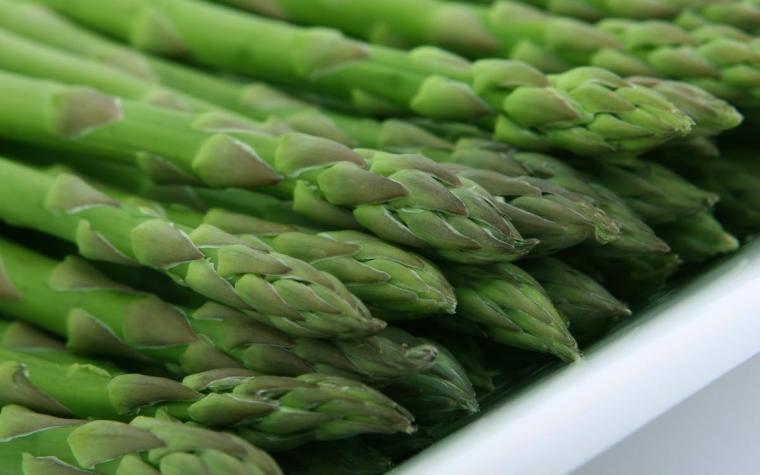COLUMBIA, Mo. – Nothing sings spring more than asparagus.
“A meal of asparagus is a good spring tonic and sets the stage for an entire growing season of more healthful eating because of the availability of fresh vegetables from the garden,” said University of Missouri Extension horticulturist David Trinklein.
One of only three common perennial vegetables, this Mediterranean native dates back more than 5,000 years, Trinklein said. Ancient Egyptians, and later Greeks and Romans, likely used it for medicinal purposes. They ate it fresh and dried it for winter use.
Those who valued the unique flavor of asparagus went to extreme measures to grow and preserve it, he said. Romans froze it high in the Alps to serve to emperors on the Feast of Epicurus. King Louis XIV of France loved asparagus so much that he had greenhouses built to grow it year-round.
Asparagus grows nearly 5 feet high. Its needle-like leaves, botanically known as “cladodes,” are modified stems. It has a deep, adventitious root system and overwinters as a crown. Asparagus is somewhat unusual in that its plants are either male or female. Female plants bear small red berries that are slightly toxic to humans. Male crowns tend to produce more spears.
Spears emerge in early spring and continue until early June. Spears grow white then turn green as they emerge and develop chlorophyll. White asparagus, a delicacy among delicacies, keeps its blanched white color by being shielded from the sun.
Establishing a good asparagus bed requires patience and time, Trinklein said. Avoid the temptation to harvest any spears the year crowns are planted, he added. You can harvest lightly the second year and expect a full harvest the third year. Use June 1 as a date when harvest should end, he said.
Trinklein offers the following tips for growing asparagus:
• Choose your planting site well. If established correctly, asparagus plants will bear for many years. Asparagus does not like wet, soggy soil. Grow in well-drained soil or use raised beds. Do not rotate asparagus with other vegetables.
• Grow a cover crop such as buckwheat the summer before planting asparagus to increase soil organic matter. Alternatively, plant rye or wheat in the fall the year before you plant. Have soil tested. The optimal pH for asparagus is 6.5 to 7. Incorporate lime into the soil as needed. Before planting, add 20 pounds of 10-20-10 fertilizer per 1,000 square feet of garden.
• Plant asparagus in early spring. In southern Missouri, plant as early as late March or early April; in the central and northern regions, plant early to mid-April.
• Select healthy 1-year-old crowns from an inspected nursery. Separate and plant crowns by size to encourage uniform growth. Store unplanted crowns in a refrigerator.
• Plant crowns in the bottom of an 8-inch furrow. Space crowns 12 to 18 inches apart. Cover with 2 inches of soil. When growth emerges through the soil, cover again. Repeat this process until the furrow is covered.
• Rows need to be at least 5 feet apart so the ferns can close to form a canopy that helps with weed control.
• Hoe lightly for weed control. Avoid using a power rotary tiller that might damage crowns, reduce yields and promote diseases. Apply organic mulches 4 to 6 inches thick to suppress weeds.
• Glyphosate remains the herbicide of choice for weed control. Apply it before spears emerge and after the last harvest. Trinklein does not recommend rock salt, which was once used to control shallow-rooted weeds in asparagus. Salt can damage soil structure, resulting in a crust that does not allow water to enter.
• Irrigate as needed the first three years.
• Harvest by snapping off the spear near the ground. Harvest this prolific plant every one to three days. Immerse spears in water and refrigerate immediately.
The MU Extension publication “Growing Asparagus in Missouri” is available for free download.

